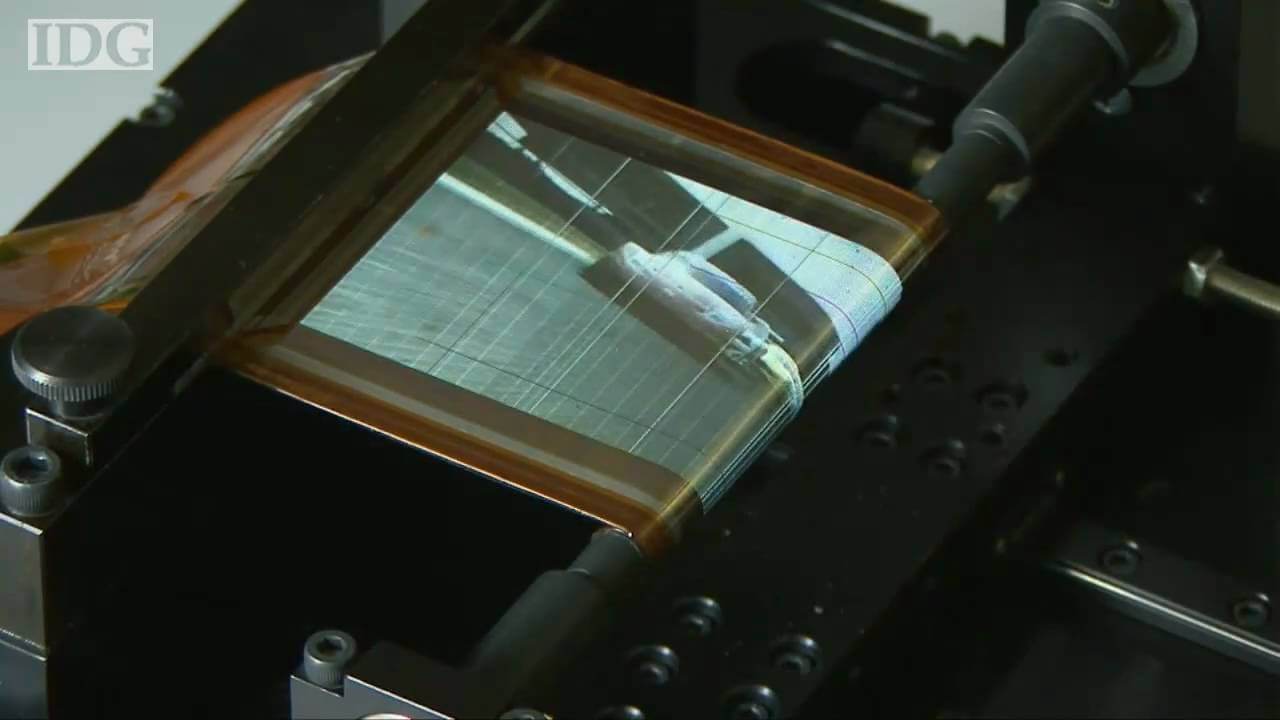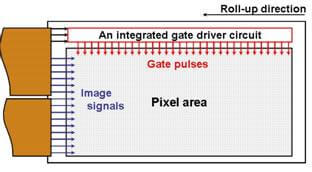Sony’s New Flexible OLED Display Can Roll Into Tiny Cylinder While Playing!

Share

Sony's new OLED display is only 80 microns thick and can roll and unroll around a 4mm cylinder while still playing. Try that with your current TV screen ...no wait, don't.
The age of flexible and deformable displays is drawing nearer. Sony recently debuted its latest in OLED technology: a 4.1 inch screen that's only 80 microns thick. The super flexible display can roll up into a cylinder just 4 mm in diameter - while still showing moving images at 432x240 resolution! Instead of brittle integrated circuit chips, the flexible screen has an on-panel gate driven circuit - a world first according to Sony. That innovation would allow everything but the power supply to roll and flex in applications. Check out the amazing screen in action in the video below:
Sony's unnamed prototype is far from the first flexible display we've seen. Samsung has a folding OLED screen that is creeping towards market, and HP has a thin flexible display that is getting ready for mass production. However, Samsung doesn't have their control circuits flexing with the screen, and HP's displays break after rolling it up a half dozen times (they are meant to hold a contoured shape, not flex repeatedly). The Sony screen has been rolled and unrolled more than a 1000 times while still working, and it displays an image the entire time!
Obviously this is just a prototype, so we shouldn't anticipate seeing any of this technology on the market for years at best. However, there are several key innovations in this product that I think may make a difference in long term screen technology. Foremost is the use of organic on-panel gate driven circuits, which are flexible, to replace IC chips. Essentially the entire display unit, except for power, will be able to bend repeatedly - opening up the opportunity for placing these types of screens on a much wider range of surfaces. Also, Sony developed new organic chemical applications for their prototype. They improved organic insulators, and are working with a better organic semiconductor (a peri-Xanthenoxanthene derivative). These innovations helped them achieve a nice 1000:1 contrast ratio, 121 pixels per inch (a world record for this type of screen according to Sony), and still fit the entire package in a sheet just 80 microns thick.
Be Part of the Future
Sign up to receive top stories about groundbreaking technologies and visionary thinkers from SingularityHub.



Sony's prototype is the world's first that uses organic driver circuits that fit on the screen itself and flex with it.
With improved flexible and durable screens, we could eventually see displays coating almost every surface. Buses will have TV ads playing on their sides, you'll be able to watch movies on people's clothes, and every piece of furniture in your house could have its own display built in. We could also see roll out screens attached to smart phones, giving you larger pictures when needed without taking up too much space in your pocket. The applications for these kinds of technologies are numerous, and Sony's latest prototype is a good step towards making them a reality. I just hope that as the time comes we'll still have the ability to turn all these screens off when we want to.
[image credits: Sony]
[source: Sony Press Release]
Related Articles

This Portable Wind Turbine Is the Size of a Water Bottle and Charges Devices in Under an Hour

Mojo Vision’s New Contact Lens Brings Seamless Augmented Reality a Step Closer
The Weird, the Wacky, the Just Plain Cool: Best of CES 2020
What we’re reading